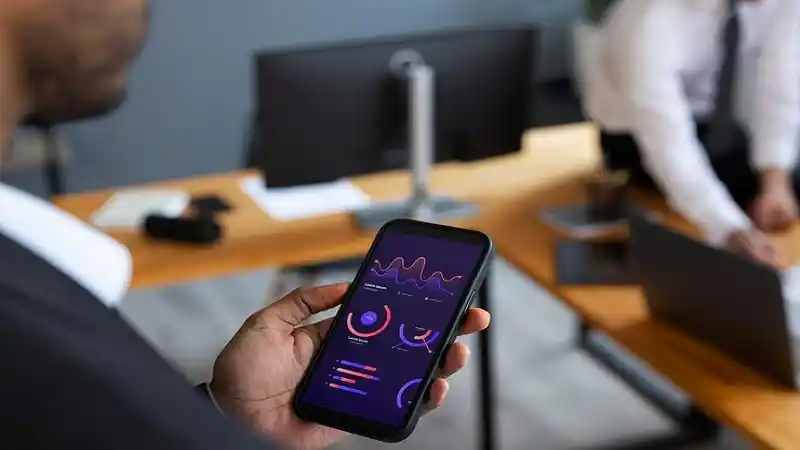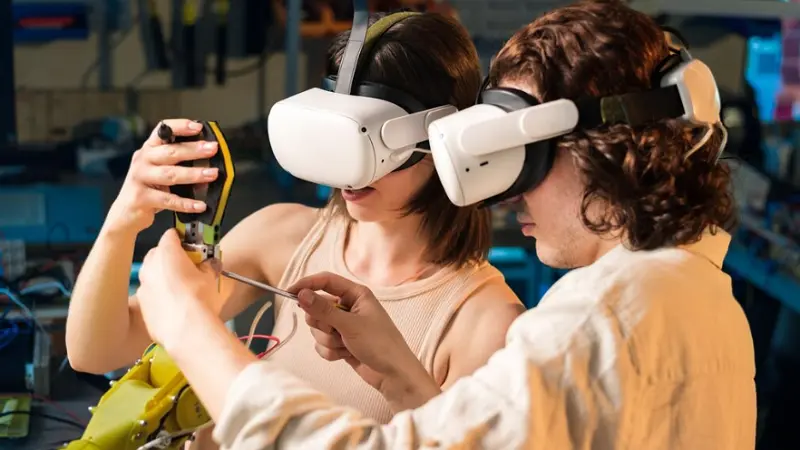In the ever-evolving landscape of mobile technology, user experience has become a paramount focus. Android, a platform known for its adaptability and user-centric design, has recently taken a significant leap forward with its introduction of “Material You.” This concept not only aims to enhance the aesthetic appeal of Android devices but also revolutionizes personalization. In this article, we’ll dive deep into the details of Material You, its impact on Android design, and how it relates to recent discussions in tech circles, particularly in connection with industry insights like those from Android Material You 294k Mauspereztechcrunch.
What is Material You?
Material You is Google’s latest design system introduced with Android 12. This new approach builds on the previous Material Design principles but introduces a more dynamic and personalized experience. At its core, Material You is about allowing users to express themselves through their devices. The idea is to create a system that adapts to the user’s preferences, context, and needs.
Key Features of Material You
- Dynamic Theming: One of the most exciting features of Material You is dynamic theming. This allows the operating system to adapt its color palette based on the user’s wallpaper. For instance, if you choose a wallpaper with warm colors, the system will automatically adjust UI elements—like buttons, backgrounds, and text—to complement that color scheme. This creates a more cohesive and personalized visual experience.
- Customizable Widgets: Material You enhances the widget experience by allowing users to customize the look and feel of their widgets. Users can resize, reshape, and recolor widgets, making it easy to create a home screen that truly reflects their style.
- User-Centric Design: Material You emphasize user control. Users can choose the shapes of UI elements and even the styles of their app icons. This flexibility means that each device can feel unique, and tailored to the individual who uses it.
- Accessibility: Material You isn’t just about aesthetics; it also prioritizes accessibility. The design system incorporates high contrast and legible typography, ensuring that the interface remains usable for all, regardless of visual ability.
- Integration Across Devices: As we move towards a more interconnected world, Material You allows for seamless integration across devices. Whether on a phone, tablet, or wearable, the design language remains consistent while adapting to different screens and contexts. Android Material You 294k Mauspereztechcrunch
The Philosophy Behind Material You
At the heart of Material You lies a philosophy that emphasizes personalization. Google understands that in today’s world, people want technology that reflects their identity and preferences. This shift towards user-centric design is not just about aesthetics; it’s about creating an emotional connection between the user and their device.
The Importance of Personalization
Personalization has become a crucial aspect of technology. Users are increasingly looking for devices that understand them and cater to their unique needs. By implementing Material You, Android is tapping into this demand for individualized experiences. The dynamic color theming and customizable widgets are perfect examples of how users can express their creativity and personality through their devices.
The Impact of Material You on the Android Material You 294k Mauspereztechcrunch
1. App Development:
Material You is not just a design framework for Google’s apps but has also been made available for third-party developers. This means that developers can create apps that embrace the Material You philosophy, ensuring a consistent experience across the Android ecosystem. As a result, users can enjoy a harmonious interface, regardless of which apps they use.
2. Enhancing User Engagement:
With the introduction of dynamic theming and customizable widgets, users are likely to spend more time interacting with their devices. The ability to tailor the interface to personal tastes makes the experience more engaging and enjoyable. This increased engagement can have significant implications for app developers and marketers as they adapt to a more personalized mobile landscape. Android Material You 294k Mauspereztechcrunch
3. Improving Accessibility:
Material You’s commitment to accessibility ensures that personalization does not come at the expense of usability. By focusing on clear visual elements and adjustable settings, Google aims to create an environment where everyone can benefit from technology, regardless of their abilities.
How Material You Compare to Previous Design Systems
To fully appreciate the significance of Material You, it’s essential to compare it to previous design systems, particularly the original Material Design. Launched in 2014, Material Design established a set of guidelines that focused on layering, motion, and grid-based layouts. While it revolutionized app design, it didn’t quite address the need for personalization.
Material You shifts the focus from a uniform design language to one that emphasizes individuality. It’s less about what a “material” design should look like and more about how users can make it their own. The shift from a static aesthetic to a dynamic, adaptable system is a game-changer for Android.
Case Study: Android Material You 294k Mauspereztechcrunch
Recently, Android Material You 294k Mauspereztechcrunch, a respected voice in the tech community, provided insights on TechCrunch regarding the implications of Material You. Mausperez highlighted how the introduction of this design philosophy could redefine the competitive landscape of mobile operating systems.
According to Mausperez, the ability for users to create a more personalized experience could give Android a significant edge over competitors. Users are no longer just passive consumers of technology; they want to actively shape their environments. This shift could lead to increased user loyalty and satisfaction, making Android a more attractive platform for both users and developers.
The Future of Material You
As we look towards the future, it’s clear that Material You is just the beginning of a broader trend in mobile technology. As user expectations continue to evolve, so too will the design philosophies that shape our devices. Here are a few potential directions for the future of Material You:
1. Enhanced AI Integration:
As artificial intelligence continues to advance, we can expect Material You to become even more responsive. Imagine a device that not only changes color based on your wallpaper but also learns your preferences and adjusts the interface accordingly. This could lead to an even more seamless and intuitive user experience. Android Material You 294k Mauspereztechcrunch
2. Greater Cross-Platform Consistency:
With the rise of devices like tablets, smartwatches, and even smart TVs, Material You could evolve to create a unified design language across all platforms. This would enhance the user experience by ensuring that the same principles of personalization apply, regardless of the device being used.
3. Deeper Customization Options:
As users become more accustomed to personalization, they may seek even deeper customization options. Future iterations of Material You may offer more intricate ways to modify the interface, such as custom animations, transitions, and interactive elements that can be tailored to individual preferences.
Conclusion
Android’s Material You represents a significant shift in the way we interact with technology. By prioritizing personalization and user experience, Google is redefining what it means to use a mobile device. With insights from tech experts like Android Material You 294k Mauspereztechcrunch, it’s clear that this design philosophy has the potential to reshape the competitive landscape of mobile operating systems.
As we embrace the future of technology, it’s essential to remember that at the heart of these advancements lies a desire for connection—between users and their devices, and between users and their identities. Material You is not just a design system; it’s a celebration of individuality in an increasingly interconnected world. As Android continues to evolve, we can expect even more innovative approaches to personalization, ensuring that every user can feel at home with their device.




